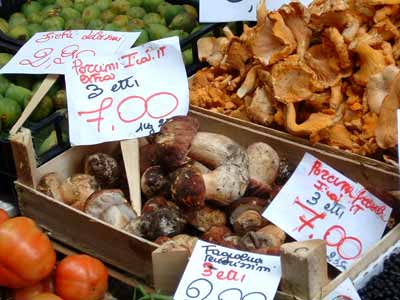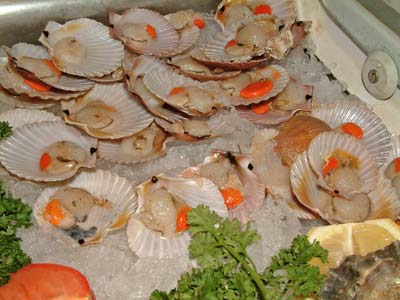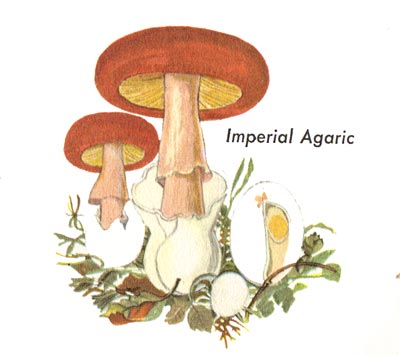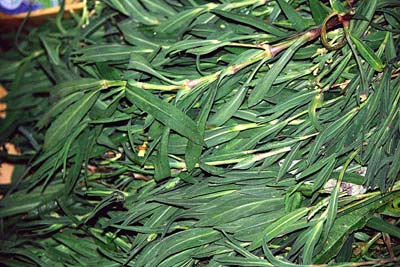
A name in the Veneto for the boletus, cep or porcino mushroom, often used in dried form in stews and stocks.
A name in the Veneto for the black boletus mushroom. Excellent to eat from August to October whether raw in salads or cooked or preserved and also freezes well.

A name in the Veneto for the boletus, cep or porcino mushroom, often used in dried form in stews and stocks.
A name in the Veneto for the porbeagle or mackerel shark. A member of the shark family common in the Atlantic. It grows to 4 meters (13 ft) in length. It has good flavour and texture and is grilled in the form of steaks.

"Holy cloak." A name in the Veneto for pilgrim or great scallops. These are shellfish with white meats and pink corals, often cooked in their shells with the corals and have sweet, succulent meat if properly cooked. According to legend, the body of St James (St-Jacques) travelled with a boat with neither oars nor sails around the Iberian coast, coming to rest in Compostela. Many miracles were associated with this journey, including one where the horse of a pagan nobleman leaped into the sea. They emerged carrying the body of St James covered in scallop shells. This resulted in the nobleman converting to Christianity. Pilgrims to Santiago de Compostela have traditionally worn scallop shell badges in commemoration of St James, or used scallop shells as begging bowls. The whole pilgrim route is decorated with his emblem. In some parts of Europe they are eaten on the feast day of St James on 25 July to commemorate the arrival of pilgrims or peregrinos at Santiago de Compostela, often with tomatoes and garlic. They are more often simply and lightly fried.
A name in the Veneto for the horn shell, a brown mottled, nobbled shellfish about 7 cm long.

A name in the Veneto for the Caesar's mushroom. Excellent raw in salads or grilled, stuffed or used as a garnish.

A name in Venice for bladder campion, the leaves of which can be cooked and used in place of spinach.